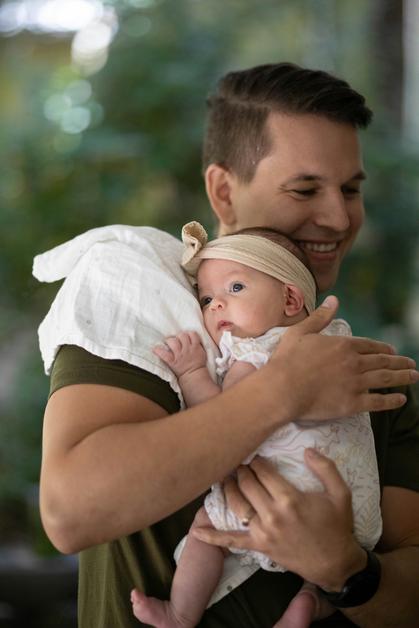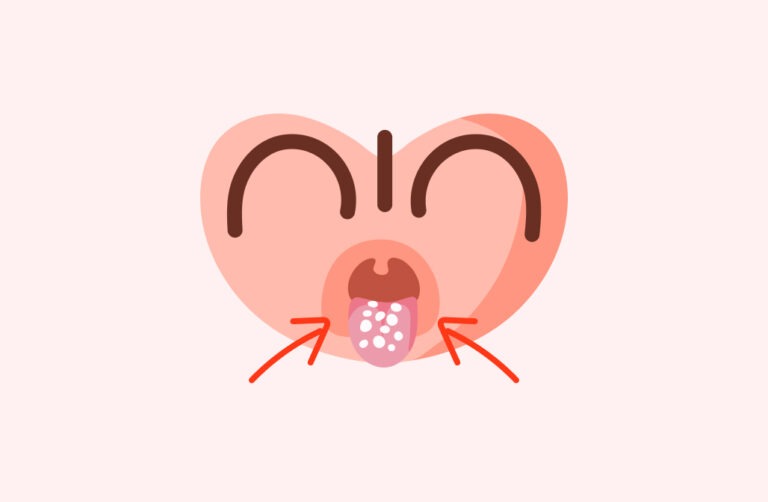Navigating the labyrinth of baby sleep under 1 year—how many parents have wondered, at 2 a.m., whether they’ll ever find a rhythm again? The relentless cycle of feedings, mysterious night wakings, and shifting nap times can leave even the most resourceful caregivers bewildered. The truth: babies are biologically wired for unpredictable sleep in their first year. Yet, there are scientifically sound ways to support both your baby’s development and your family’s well-being. This deep dive unpacks physiological sleep needs, safety strategies anchored in research, and adaptive routines that soothe both infants and adults. Curious about how teething, growth spurts, or even your response at night can ripple through your baby’s nights? Let’s break it all down, mix evidence with empathy, and offer practical answers.
Understanding the Physiology of Baby Sleep Under 1 Year
The architecture of baby sleep under 1 year is more intricate than most realize. During this period, infants’ circadian rhythms—a sort of internal timekeeper—are still forming, often resulting in fragmented and erratic sleep. Newborns, for instance, drift in and out of REM-rich sleep cycles, their brains rapidly laying down the scaffolding for cognition, memory, and emotional regulation. Imagine the brain as a city under construction, with night shifts and power outages.
Total sleep needs? Ranging from a hefty 14–18 hours in the earliest weeks to around 11–14 hours as the first birthday approaches. Notably, these requirements are punctuated by frequent feedings—especially for breastfed infants, since breastmilk digestion is more rapid than formula. Expect sleep patterns to shift, contract, and expand like an accordion, tightly linked to developmental leaps, illness, and teething.
Missed yawn, bouts of eye rubbing, or irritability? Those are subtle indicators of sleep pressure building—a biological cue akin to your own drowsiness after a long day. Responding to these signals at the right moment (rather than rigidly watching the clock) can ease transitions and buffer against overtiredness, which paradoxically makes it harder for babies to fall asleep or stay asleep.
Newborn Sleep: What to Expect 0–3 Months
Newborn baby sleep under 1 year is a realm ruled by biology and necessity. With incredibly tiny stomachs and exponential growth demands, newborns wake every 1–3 hours for feeding. Sleep, in this early stage, zigzags between active (REM) and quiet (non-REM) phases, with full sleep cycles rarely lasting more than an hour. Fragmentation is the norm.
Day-night confusion? Almost inevitable. The circadian rhythm is under construction, meaning babies may be more nocturnal. Light exposure in the daytime (indirect, not direct) and dim, calm environments after dusk can gently guide your baby toward more predictable rhythms.
Safe sleep, though, is non-negotiable. Always put your baby on their back. Use a firm, bare mattress (no pillows, loose blankets, or toys). Swaddling—a practice with deep historical and medical roots—may provide comfort, reducing startle reflexes. However, this tool must be abandoned as soon as rolling starts to prevent suffocation risks. White noise, simulating the womb’s ambient hush, often proves surprisingly calming.
Shifting Patterns: 1 to 6 Months
By the end of the first month, daylight cues begin nudging babies toward a day-night rhythm. Some infants start stretching out nighttime sleep—occasionally clocking up to 6 hours at a stretch—though variability is vast. The average? Roughly 12–16 hours per 24-hour cycle, with two or three daytime naps.
What drives these changes? Maturation of the central nervous system, evolving self-soothing capabilities, and parental cues. That said, demand feeding—particularly for breastfed infants—remains developmentally appropriate. There’s no need to rouse a healthy baby for feeds unless advised for medical reasons (like prematurity or slow weight gain).
Milestones and Evolving Sleep Needs: 4–12 Months
From four to six months, parents may notice a detectable shift: longer nighttime stretches, fewer but more predictable naps, and extended wake windows (the time between sleeps swells from a mere hour or two to three or even four by a year old). However, this is a season of turbulence—rolling, crawling, pulling up, teething, illness, and even minor digestive hiccups can send established routines tumbling.
Most babies, by 9–12 months, require two daytime naps and enjoy consolidated night sleep—though “sleeping through the night” (6–8 hours uninterrupted) is less common than cultural myths suggest. Sleep regressions—periods when a previously good sleeper suddenly starts waking up more or resisting naps—often accompany brain and body growth spurts (think separation anxiety, standing up, or new digestive milestones).
The Science of Safe Sleep
Here, medical evidence is unambiguous. Placing babies on their back prevents sudden infant death syndrome (SIDS), which peaks under 12 months. Flat, firm sleep surfaces—with only a fitted sheet—eliminate entrapment hazards. Sleep sacks can replace loose bedding, which is never recommended during infancy.
Room-sharing with your baby (sleeping in the same room but not the same bed) is associated with a lower risk of SIDS—a finding consistent across numerous studies. Pacifiers at sleep onset can be protective if introduced safely, once breastfeeding is well established for those who choose this method.
Temperature matters: the optimal sleep environment falls within 64–68°F (18–20°C). Overheating raises SIDS risk; hats, blankets, and positioners can all lead to dangerous overheating or suffocation. A cool, quiet, dark room sets the biological stage for consolidated sleep.
Routines and Rituals: Crafting Predictable Sleep
Structure does not mean rigidity; rather, it’s about gently cueing your baby’s internal clock. A consistent bedtime routine—a bath, dim lights, quiet lullabies, perhaps a gentle story—signals an imminent transition. Falling asleep drowsy but awake is the holy grail of self-settling, reducing reliance on feeding or rocking as sleep associations.
Daytime sleep is just as important: regular naps are restorative, buffer against overtiredness, and help prevent late-day meltdowns. Don’t fear the early bedtime—babies with restorative naps often sleep more soundly at night.
For older infants, offering a comfort object (once safe—no loose items in the crib before one year) or repeating the same bedtime song or phrase can imbue sleep with a reassuring sense of continuity.
Baby Sleep Challenges: Science Meets Reality
Here lies the heart of every baby sleep under 1 year conversation: night wakings, short naps, teething, illness, separation anxiety—the list reads like an initiation rite for parents. Persistent waking is biologically normal in early life. Short naps often reflect developmental immaturity in sleep cycles; with time and supportive routines, they typically lengthen naturally.
Comforting strategies draw from established research: low lighting during night wakings, soothing shushes, patting in the crib, and minimizing overstimulation all help. Teething and illness may disrupt even the best sleepers—offer comfort, manage pain as instructed by your pediatrician, and maintain routines where possible.
Well-meaning advice abounds, but data does not support myths like “keeping a baby awake leads to better nighttime sleep.” In truth, overtired infants generally experience more fragmented sleep and frequent wakings.
Pathways Toward Independent, Restful Sleep
Supporting independent sleep does not require abrupt “cry it out” methods; in fact, gentle approaches are gaining traction in medical literature. Gradually putting your baby down more awake, reducing parental involvement over time (“fading”) or using interval reassurance (returning at planned intervals to comfort the baby) can gently nurture self-soothing skills. Consistency, not speed, is the foundation for progress.
Developmental readiness varies—some infants adapt within days, others require weeks. If your baby cries inconsolably or you feel uncertain, a pediatric check-in offers both reassurance and tailored advice.
The Parental Perspective: Fatigue, Resilience, and Support
If you’re battling exhaustion—know that parental sleep deprivation is a well-documented phenomenon. Sharing night duties, napping during the day, and even brief breaks from caregiving are recommended approaches to sustaining your mental health. Persistent fatigue, distress, or feelings of overwhelm merit a conversation with your healthcare provider. Remember, your own well-being directly influences your capacity to care for your infant.
Recognizing Healthy Sleep and Red Flags
What does healthy baby sleep under 1 year look like? Signs include age-appropriate sleep duration, easy settling (not necessarily sleeping through the night), and general contentment when awake. Babies waking briefly at night but able to return to sleep on their own are demonstrating normal physiological processes.
Persistent difficulty falling asleep, frequent prolonged cries, excessive daytime irritability, or concerning breathing patterns (snoring, gasping, pauses in breathing) require attention—consult your baby’s healthcare provider without delay. Trust your instincts; parents are excellent observers of subtle changes in their children.
Key Takeaways
- Baby sleep under 1 year is a landscape marked by rapid evolution, frequent night wakings, and dynamic routines.
- Back sleeping, a firm crib, and a bare environment are non-negotiable for safety; room-sharing—but not bed-sharing—lowers risk.
- Feeding choices, developmental leaps, and health status shape sleep patterns in profound ways.
- Evidence-based routines, gentle rituals, and patient observation foster both restorative sleep for babies and much-needed respite for parents.
- Parental well-being is foundational: prioritize rest, share responsibilities, and lean on your support network.
- If concerns about your baby’s sleep or your own well-being persist, healthcare professionals offer guidance grounded in both empathy and science.
- For personalized advice and free health questionnaires tailored for children, explore the Heloa app—an additional resource for navigating the fascinating journey of baby sleep under 1 year.
Questions Parents Ask
How many naps should a baby under 1 year take each day?
During the first 12 months, most babies need between two and four naps a day, depending on their age and individual needs. Newborns may nap more frequently, while older infants often settle into a routine of two longer naps. Observe your baby’s signals—yawning, eye rubbing, or fussiness can all mean it’s time to rest. Every child is unique, so don’t worry if your little one’s nap pattern differs from others. The most important thing is that your baby seems content and alert when awake.
What does a healthy sleep environment look like for an infant?
Creating a safe and peaceful space encourages restorative sleep. Place your baby on their back in a crib with a firm mattress and a fitted sheet, keeping the sleeping area free of pillows, blankets, toys, and bumpers. The room should be cool, quiet, and dark to support good rest—think gentle, dim lighting for nighttime care. Minimizing noise and avoiding electronics near sleep times can also help. These habits gently guide your baby towards a sense of calm and security at bedtime.
Should I wake my baby for feeds during the night?
For most healthy, full-term infants, it is not necessary to wake them for feeds after they’ve regained their birth weight and are growing steadily. Trust your baby’s cues; they will usually wake up on their own when hungry. In certain cases—such as prematurity or concerns about weight gain—your healthcare provider may recommend waking for feeds. If you are uncertain, or have any worries about your baby’s feeding or growth, it is always reassuring to reach out to your pediatrician for personalized guidance.









